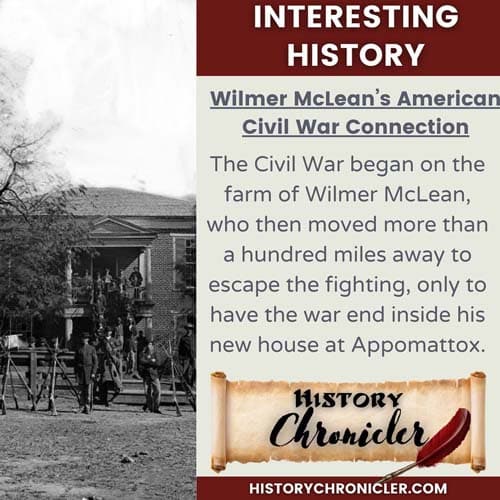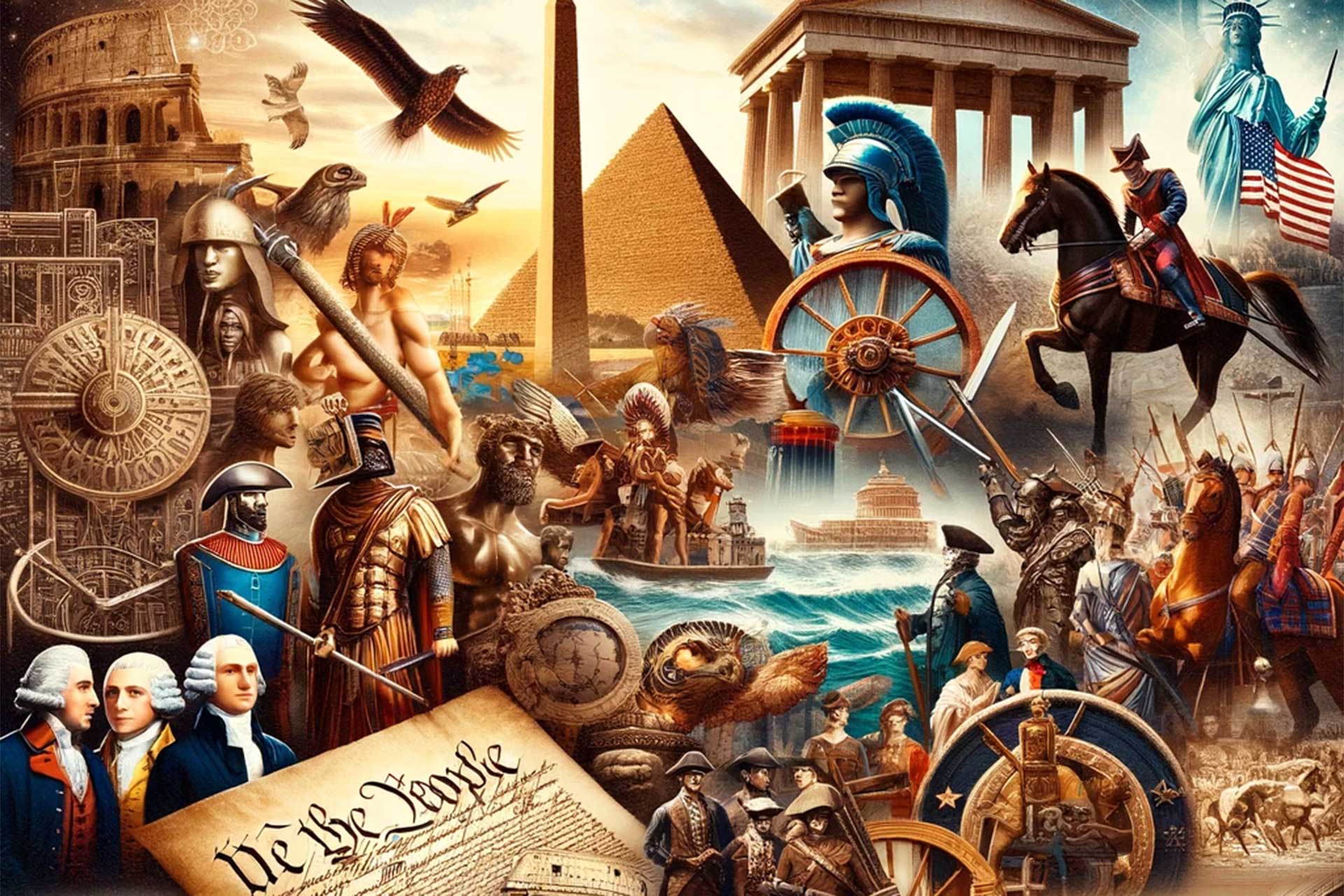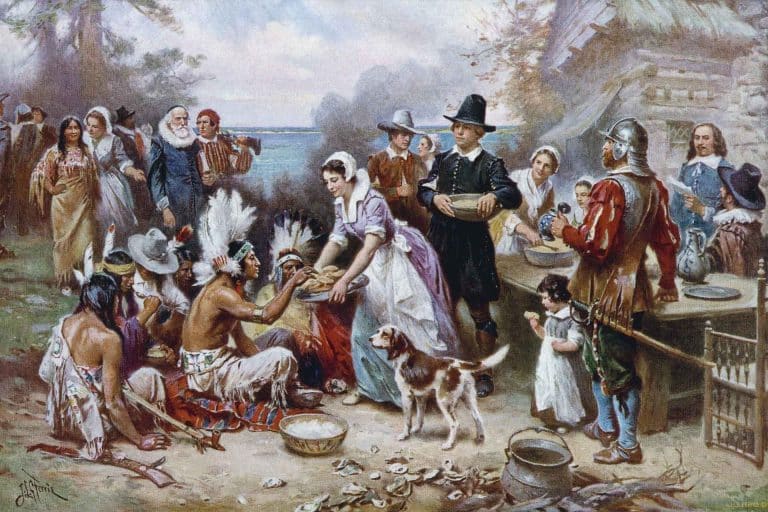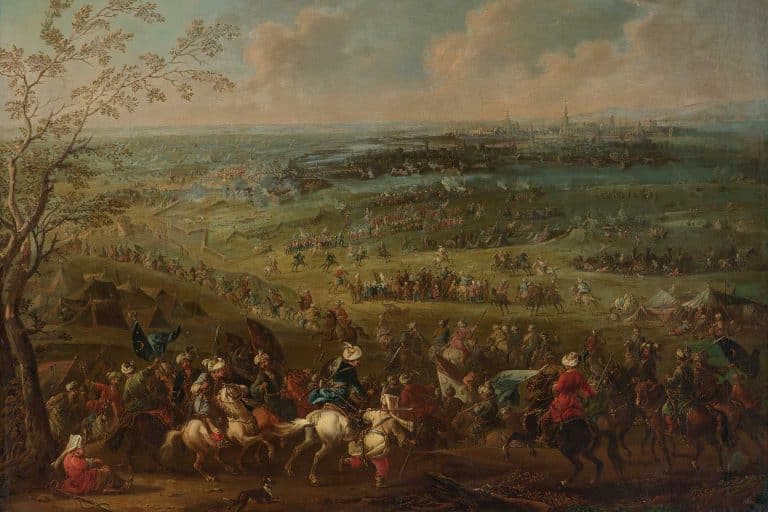Interesting & Mind Blowing History facts
Diving into the realm of history facts often leads to a treasure trove of astonishing and mind-blowing details that shed light on our past. History, a vast and intricate tapestry, is rife with events, personalities, and moments that challenge our perceptions and broaden our understanding of the world. From ancient civilizations’ incredible achievements to unexpected twists in more recent events, this article will embark on a thrilling journey through time. We’ll uncover little-known historical nuggets, explore the lesser-told stories behind major events, and unravel the mysteries that have captivated historians and enthusiasts alike. Get ready to have your mind blown by the intriguing and often surprising facts that make up the rich and diverse narrative of human history.

Abraham Lincoln, the 16th President of the United States, had an unexpected chapter in his early life as an accomplished wrestler. Long before his presidential days, Lincoln was known for his impressive physical strength and wrestling prowess in New Salem, Illinois. Standing at an imposing 6 feet 4 inches tall, his long limbs and formidable reach made him a formidable opponent in the wrestling ring. He is famously known to have been defeated only once in about 300 matches, securing his reputation as a legendary local wrestler. His wrestling career, although a lesser-known aspect of his life, exemplified his competitive spirit and physical capabilities. Lincoln’s wrestling talents even earned him an “Outstanding American” honor in the National Wrestling Hall of Fame, highlighting a unique facet of this revered historical figure’s life.

The macuahuitl, a distinctive weapon of the Aztec warriors, was a fearsome and highly effective tool in combat, renowned for its unique construction and lethal capability. This weapon, often likened to a sword or club, was made from a sturdy wooden shaft embedded with razor-sharp obsidian blades along its edges. The obsidian, a volcanic glass found abundantly in Mesoamerica, was capable of producing an edge as sharp as a modern steel razor blade. The macuahuitl’s design allowed for both slashing and bludgeoning actions, making it a versatile weapon in the hands of skilled Aztec warriors. It was feared and respected by their enemies, including the Spanish conquistadors, who documented encounters with these formidable weapons. The macuahuitl stands as a testament to the ingenuity and martial prowess of the Aztec civilization, showcasing their ability to turn natural resources into powerful tools of warfare.

In 1945, a remarkable yet tragic event unfolded in Oregon, marking the only instance of death caused by enemy action on the American mainland during World War II. A Japanese balloon bomb, part of Japan’s Fu-Go project, descended upon Oregon’s forests. These balloon bombs were an ingenious yet desperate attempt by Japan to target the United States. They were designed to float across the Pacific Ocean, carried by the jet stream, and drop explosives on American soil. The balloon that landed in Oregon tragically claimed the lives of a woman and five children who discovered it during a picnic, unaware of its lethal nature. This incident stands as a somber reminder of the far-reaching impacts of warfare and the unforeseen consequences of employing innovative but untested weapons in conflict. The Japanese balloon bomb in Oregon is a relatively obscure but significant footnote in the history of World War II, demonstrating the unpredictable and often tragic nature of war.

The American Civil War, a defining event in the nation’s history, has the unique distinction of having both started and ended on the property of Wilmer McLean. The war’s beginning in 1861 was marked by the First Battle of Bull Run, which took place on McLean’s farm in Manassas, Virginia. This battle set the stage for the bloody conflict that would ensue over the next four years. In a twist of fate, the war effectively came to a close in 1865 at McLean’s new home in Appomattox Court House, Virginia. It was in his parlor that General Robert E. Lee surrendered to General Ulysses S. Grant, signaling the end of the Civil War. McLean is famously quoted as saying, “The war began in my front yard and ended in my front parlor,” highlighting the extraordinary coincidence that bookended his involvement in this pivotal chapter of American history. His properties inadvertently became historical landmarks, framing the narrative arc of the Civil War from its inception to its conclusion.

On January 15, 1919, Boston experienced one of the most bizarre and tragic incidents in its history – the Great Molasses Flood. In the city’s North End, a massive storage tank containing over 2 million gallons of molasses burst, unleashing a towering wave of thick syrup that traveled at approximately 35 miles per hour. The flood devastated the area, engulfing streets, damaging buildings, and overturning vehicles. The torrent of molasses trapped and drowned 21 people and injured over 150, creating a chaotic and nightmarish scene. The disaster was attributed to the failure of the tank, built hastily and inadequately to meet the growing demand for molasses, often used in munitions manufacturing during World War I. The Great Molasses Flood remains a unique and tragic event in Boston’s history, serving as a stark reminder of the importance of industrial safety and the unpredictable nature of such disasters.

China’s long and tumultuous history is marked by warfare and conflict, with the nation having been a central stage for seven of the ten deadliest wars in human history. This includes the Three Kingdoms War, the Qing dynasty’s conquest of the Ming dynasty, and the Taiping Rebellion – one of the most catastrophic civil wars ever, resulting in millions of fatalities. These conflicts, often driven by power struggles, territorial expansions, and internal upheavals, spanned across various dynasties and eras, profoundly shaping the course of Chinese history. The scale and impact of these wars were not only a reflection of the vastness of China’s geography and the size of its population but also of the intense societal and political transformations the nation underwent. These wars left indelible marks on China’s cultural and historical landscape, influencing its path to becoming the nation it is today.

Billy the Kid, one of the most iconic figures of the American Old West, known for his reputation as a notorious outlaw, was actually born far from the dusty plains and gun-slinging lore of the frontier. His beginnings trace back to New York City, where he was born as Henry McCarty in 1859. This revelation about his birthplace adds a surprising twist to the traditional narrative of his life. It suggests a dramatic transition from the urban landscape of the East Coast to the lawless frontiers of the West. Billy’s early years in New York City remain shrouded in mystery, but his move to the West, where he later became known as William H. Bonney, set the stage for his infamous career as a gunslinger and outlaw. His journey from the bustling streets of New York to the rugged territories of New Mexico encapsulates a quintessential tale of transformation during the era of westward expansion in the United States.

The University of Oxford, a venerable institution steeped in academic tradition, astonishingly predates the Aztec Empire, one of the most well-known pre-Columbian civilizations in the Americas. Established in the 12th century, Oxford is recognized as the oldest university in the English-speaking world, with teaching occurring there as early as 1096. This timeline places its inception several centuries before the rise of the Aztecs, who began to build their influential empire in the early 13th century. While the Aztec Empire is renowned for its advanced architectural and cultural achievements in what is now Mexico, Oxford was already an established center of learning in Europe, influencing educational practices and scholarship. This comparison between Oxford and the Aztecs highlights not only the vast historical and cultural differences between the two but also underscores the rich and diverse development of human civilizations across different parts of the world.

Iceland boasts the distinction of having the Althing, the longest continuously running parliament in current history, a testament to its rich democratic heritage. Established in 930 AD at Thingvellir, the Althing has been the cornerstone of Icelandic governance for over a millennium, surviving through various forms of political upheaval and changes in governance. Originally an open-air assembly held by the early Icelandic settlers, the Althing symbolized a significant advancement in governance and law, providing a forum for leaders to discuss legal matters, settle disputes, and make key decisions for the community. This tradition of communal decision-making set a precedent for democratic practices, evolving over the centuries to adapt to Iceland’s changing political landscape. The Althing’s endurance through time is not just a historical curiosity but a reflection of Iceland’s deep-rooted commitment to democratic principles and its ability to adapt and sustain these values through the ages.

Mansa Musa, who reigned from 1312 to 1337, is often considered the richest person in history. As the emperor of the wealthy West African Mali Empire, which encompassed territories including modern-day Mali, Senegal, Gambia, Guinea, Niger, Nigeria, Chad, Mauritania, and Burkina Faso, his wealth was so immense that his lavish pilgrimage to Mecca in 1324 reportedly disrupted the economy of the regions through which he traveled due to the vast amount of gold he distributed.







